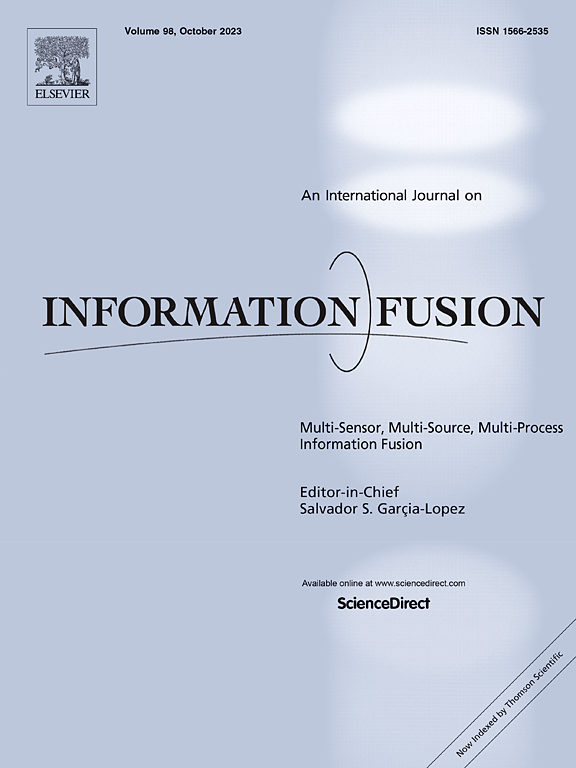Dynamic frequency selection and spatial interaction fusion for robust person search
IF 14.7
1区 计算机科学
Q1 COMPUTER SCIENCE, ARTIFICIAL INTELLIGENCE
引用次数: 0
Abstract
Person search aims to locate target individuals in large image databases captured by multiple non-overlapping cameras. Existing models primarily rely on spatial feature extraction to capture fine-grained local details, which is vulnerable to background clutter and occlusions and leads to unstable feature representations. To address the issues, we propose a Dynamic Frequency Selection and Spatial Interaction Fusion Network (PS-DFSI), marking the first attempt to introduce frequency decoupling and selection into person search. By integrating frequency and spatial features, PS-DFSI enhances feature expressiveness and robustness. Specifically, it comprises two core modules: the Dynamic Frequency Selection Module (DFSM) and the Spatial Frequency Interaction Module (SFIM). DFSM decouples feature maps into low-frequency and high-frequency components using learnable low-pass and high-pass filters, and a frequency selection modulator emphasizes key frequency components via channel attention. SFIM refines local details by fusing frequency-enhanced features with high-level semantic representations, leveraging multi-scale receptive fields and cross-feature attention for efficient spatial-frequency integration. Extensive experiments on CUHK-SYSU and PRW demonstrate that PS-DFSI significantly improves person search performance, validating its effectiveness and robustness.
鲁棒人物搜索的动态频率选择与空间交互融合
人员搜索的目的是在多个不重叠的摄像机捕获的大型图像数据库中定位目标个体。现有模型主要依靠空间特征提取来捕获细粒度的局部细节,容易受到背景杂波和遮挡的影响,导致特征表示不稳定。为了解决这一问题,我们提出了一个动态频率选择和空间交互融合网络(PS-DFSI),这是首次将频率解耦和选择引入到人的搜索中。PS-DFSI通过整合频率特征和空间特征,增强了特征的表达性和鲁棒性。具体来说,它包括两个核心模块:动态频率选择模块(DFSM)和空间频率交互模块(SFIM)。DFSM使用可学习的低通和高通滤波器将特征映射解耦为低频和高频组件,频率选择调制器通过通道关注来强调关键频率组件。SFIM通过融合频率增强特征和高级语义表示来细化局部细节,利用多尺度接受场和跨特征注意来实现有效的空间-频率集成。在中大-中山大学和PRW上的大量实验表明,PS-DFSI显著提高了人员搜索性能,验证了其有效性和鲁棒性。
本文章由计算机程序翻译,如有差异,请以英文原文为准。
求助全文
约1分钟内获得全文
求助全文
来源期刊

Information Fusion
工程技术-计算机:理论方法
CiteScore
33.20
自引率
4.30%
发文量
161
审稿时长
7.9 months
期刊介绍:
Information Fusion serves as a central platform for showcasing advancements in multi-sensor, multi-source, multi-process information fusion, fostering collaboration among diverse disciplines driving its progress. It is the leading outlet for sharing research and development in this field, focusing on architectures, algorithms, and applications. Papers dealing with fundamental theoretical analyses as well as those demonstrating their application to real-world problems will be welcome.
 求助内容:
求助内容: 应助结果提醒方式:
应助结果提醒方式:


